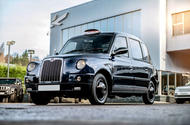Unwanted taxis are being converted into luxocabs or totally reinvented
Exodus of old cabs from London has imaginations running wild from pirate ships to luxury interiors
Another nail was hammered into the coffin of old diesel-engined London taxis in November last year when their maximum permitted age for operation in the capital was reduced by one year to 13 years.
To encourage wider take-up of cleaner alternatives, including zero-emissions-capable vehicles, Transport for London offers a grant to owners to take their older diesel taxis off the road and another grant towards the purchase of a new LEVC TX range extender or suchlike.
These grants and the age restrictions first introduced in 2018 are achieving their desired objective, since around a third of London taxis are now zero-emissions capable.
However, that’s one-third of not a lot. While TfL has been changing the type of taxis that Londoners travel in, Covid and the city’s Streetspace plan (established in response to the pandemic) have been quietly reducing the taxi population.
The latest government figures reveal that between 2020 and 2021, the number of taxis in London fell by almost 30% to 13,400. In fact, by the beginning of November 2021, just 9073 diesel taxis were licensed.

“This dramatic fall in taxi numbers is due to a mixture of cabbies and fleets decommissioning cabs and scrapping vehicles that fall outside the age limit,” says Perry Richardson, founder and editor of Taxi Point, a trade journal.
“Because demand for taxi services dropped during the pandemic, very few cabbies and fleets reinvested that money into new zero-emissions-capable cabs, hence the shortage we now see.”
What has happened to all these unwanted diesel taxis, mainly LTI FX4s (1958-1997), LTI TXIs (1997- 2002), LTI TXIIs (2002-2006) and LTI/LTC TX4s (2007-2017)?
As Richardson says, many have been scrapped. However, luckier ones have been given a new lease of life as anything from £100,000 luxocabs to reborn 1940s pick-ups and ribbon-swaddled wedding cars.
The fact is, with its separate chassis, sturdy mechanicals and roomy interior, an old London taxi is the perfect base for a conversion, whether your goal is a luxury fitout or a near-body-off reinvention.

Representing the former is Kahn Automobiles’ special TX4, built to celebrate the final production run in 2017. This Rolls-Royce of taxis looks like a conventional black cab on the outside but inside is anything but, with its quilted leather seats, aluminium pedals, colour-coded seatbelts, leather steering wheel, starlight headlining and more.
“Designing the cabs was a real journey and one that I enjoyed very much,” says company boss Afzal Kahn. “There’s a lot of romance surrounding the vehicle. You ignore what’s under the skin and fall in love with its looks.”
Maybe so, but sitting in it, it would surely be hard to ignore the less than luxurious noise, performance and comfort in your £100,000 cab?
Kahn claims to have thought of that, adding extra sound deadening and tweaking the engine slightly. He judged the standard ride to be perfectly acceptable, so that remained unchanged. Kahn created five examples of the luxury TX4, and all are now sold.
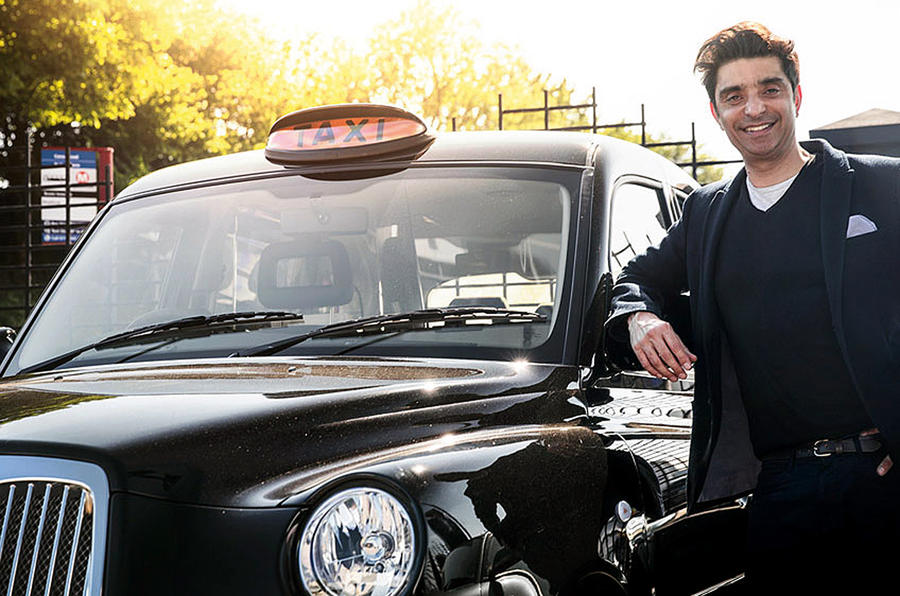
In truth, the donor vehicles never carried fares around London but were taken straight off the factory floor. The same can’t be said of those taxis that see out their final days as things like wedding cabs.
Surrey-based Wedding Taxis claims to be the original and largest supplier of London-style taxis for use as wedding transport. Its range includes classic FX4 Fairways, TX4s and even a 1940s Nuffield Oxford, all of them enjoying a gentle retirement taking brides to churches and hitched couples to receptions.
I wonder what they would think about turning up in one of Paul Bacon’s taxi-based creations. Around the time when Kahn was designing his luxurious TX4s, the Leicester-based engineer was putting the finishing touches to a taxi conversion like no other.
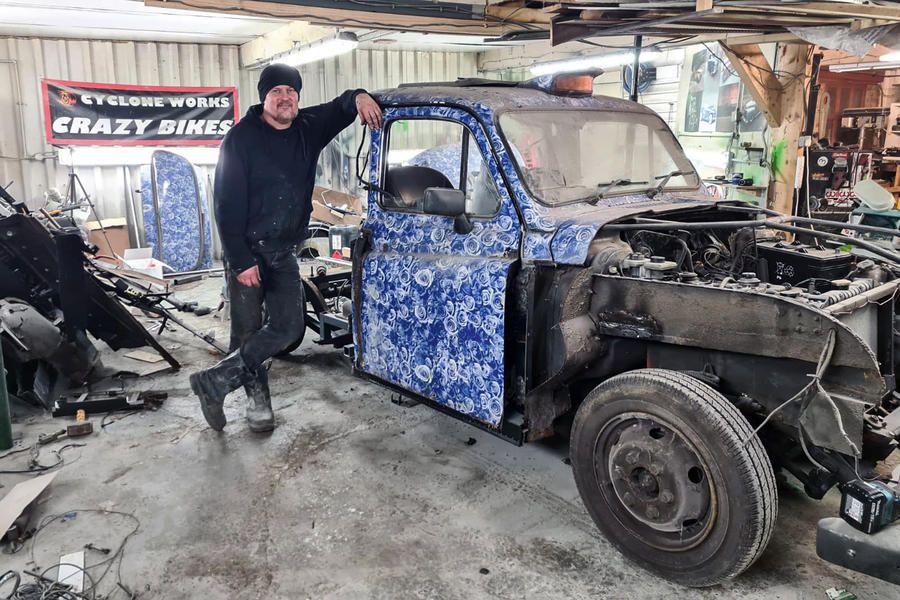
“I had been looking forward to a week away in Venice with my wife, but then she caught the flu so couldn’t go,” he explains. “I wondered what I’d do with myself at home for seven days. I’m a bit of an inventor – my main business is building bicycle-powered smoothie makers – so I thought I’d amuse myself and build something stupid, like a taxi-based truck.”
Bacon used the bones of an FX4 Fairway and the build took just seven days. He called it the Taxidermist. Encouraged by the experience, the following year, in 2018, he built his first Fairway-based pick-up, inspired by the 1940s Ford F-1.
“The beauty of the traditional London taxi is that it has a separate chassis that doesn’t corrode much, while the Fairway is powered by a bulletproof Nissan 2.7-litre diesel engine driving the wheels through an equally tough Toyota three-speed auto gearbox,” he says. “The rest of it, though, is junk and rusts like crazy.”
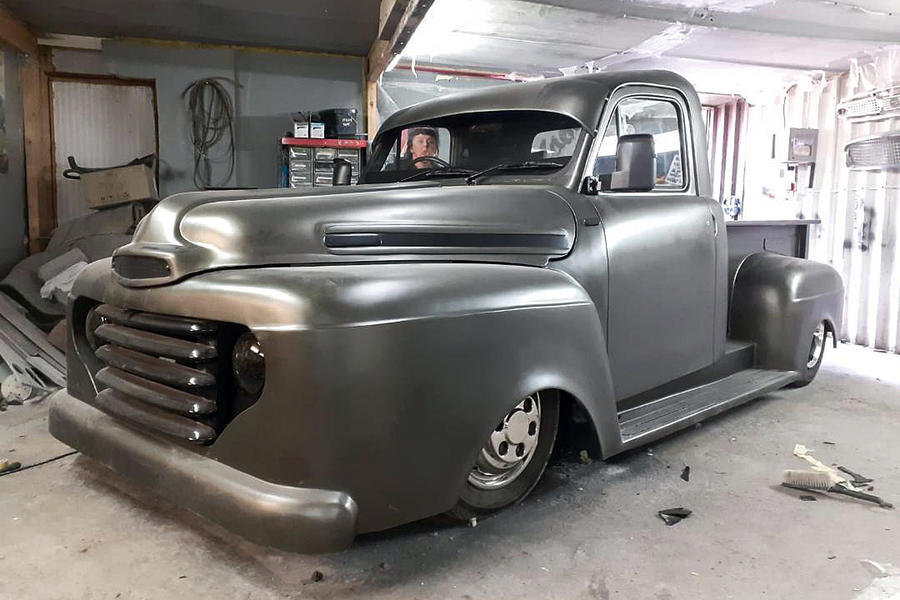
That being so, for his replica F-1, Bacon binned most of the body bar the front doors, front roof section, windscreen and front bulkhead.
Next he created a buck for the new front end from plaster and polystyrene, smoothed with body filler. This he lined with wax before filling it with glassfibre to form an F-1 nose cone and front end.
The rear bulkhead he made from steel and the front wings and running boards from glassfibre. He chose a composite for the rear load sides and the tailgate and timber for the load floor.
Bacon sold the finished truck for a small profit, a fact that sprang to mind when, a couple of years later, Covid struck and demand for his pedal-powered smoothie makers dried up.
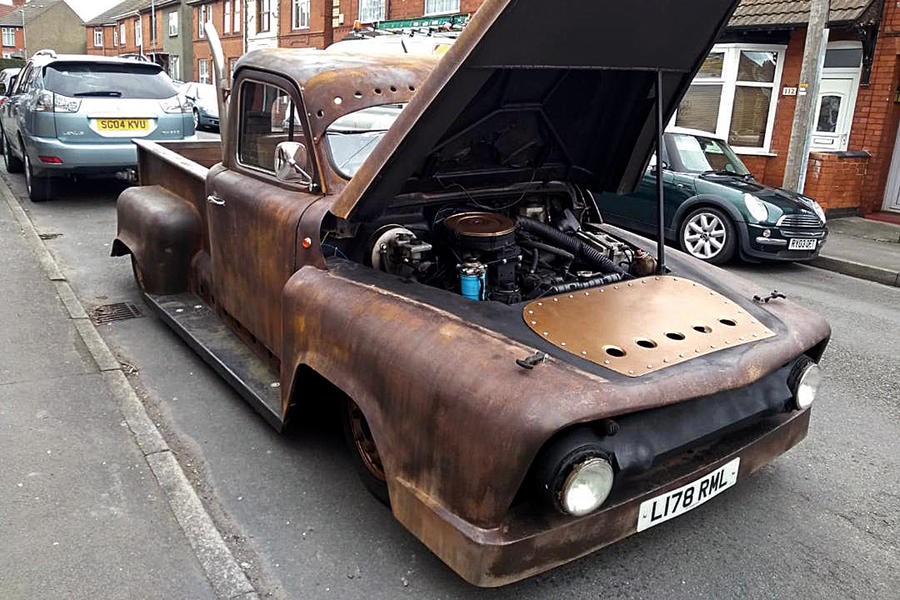
“I decided more taxi-based pick-ups would get us through,” he says. “I posted a film of me building the first one on social media and orders trickled in. Each one takes about six weeks to build and, including the donor Fairway, which I can pick up for £600-£1000, costs £8500 ready to go. I have built three and am just starting the fourth.”
When that’s completed, Bacon’s next taxi-based project is a catering van. His own taxi-based runabout will be a hot rod powered by the 4.0-litre V8 from a Lexus LS 400.
When it’s finished, there won’t be any more taxi-based creations. He’s going back to his bonkers bikes.
“I’ve built 11 taxi-based vehicles, and frankly they all blur into one nightmare!” he says.
Still, talking to this madcap engineer, I get a sense that if you give him an old Fairway and a few grand, you will get the surprise of your life and a London taxi like no other.
What to pay for a second hand cab
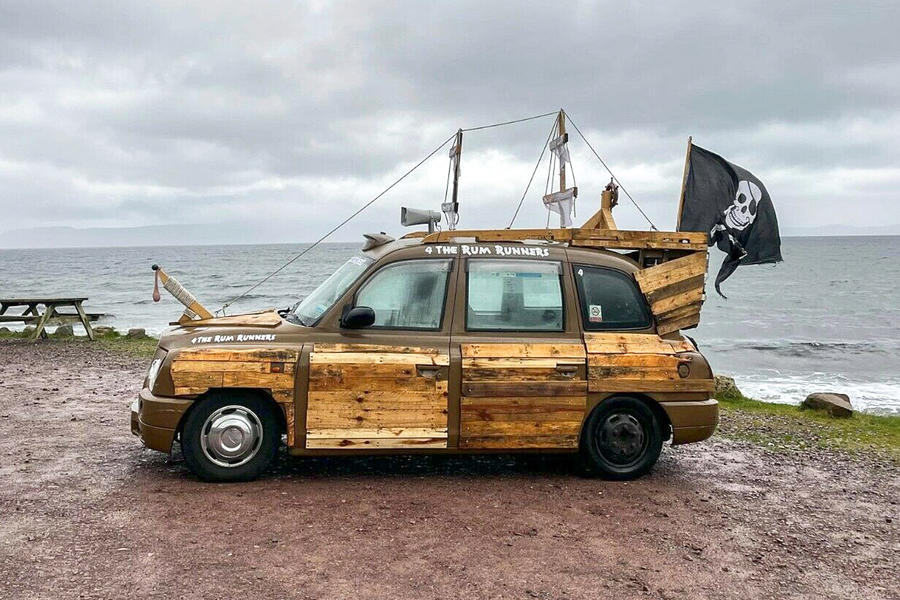
Prices for ratty FX4 Fairways start at around £600, although we found one converted into a pirate ship for just £200. Those in good condition are rare, which is why one seller is asking £5000 for his pristine example.
The later TXII is also cheap, with good ones peaking at around £2000. Prices start at around £500 for cabs a bit older than TfL’s 13-year age limit and with around 400,000 miles, rising to as much as £25,000.
The sweet spot is around £5000 for a 10-year-old one with 180,000 miles. Still, that only gives you a couple of years cabbying before it can no longer be used in the capital.
On that point, if cabbying rather than converting is your aim, check the paperwork before buying, since there have been reports of cabbies buying taxis that they thought were young enough, only to find when applying for a licence that they had been decommissioned by TfL.
Source: Autocar
